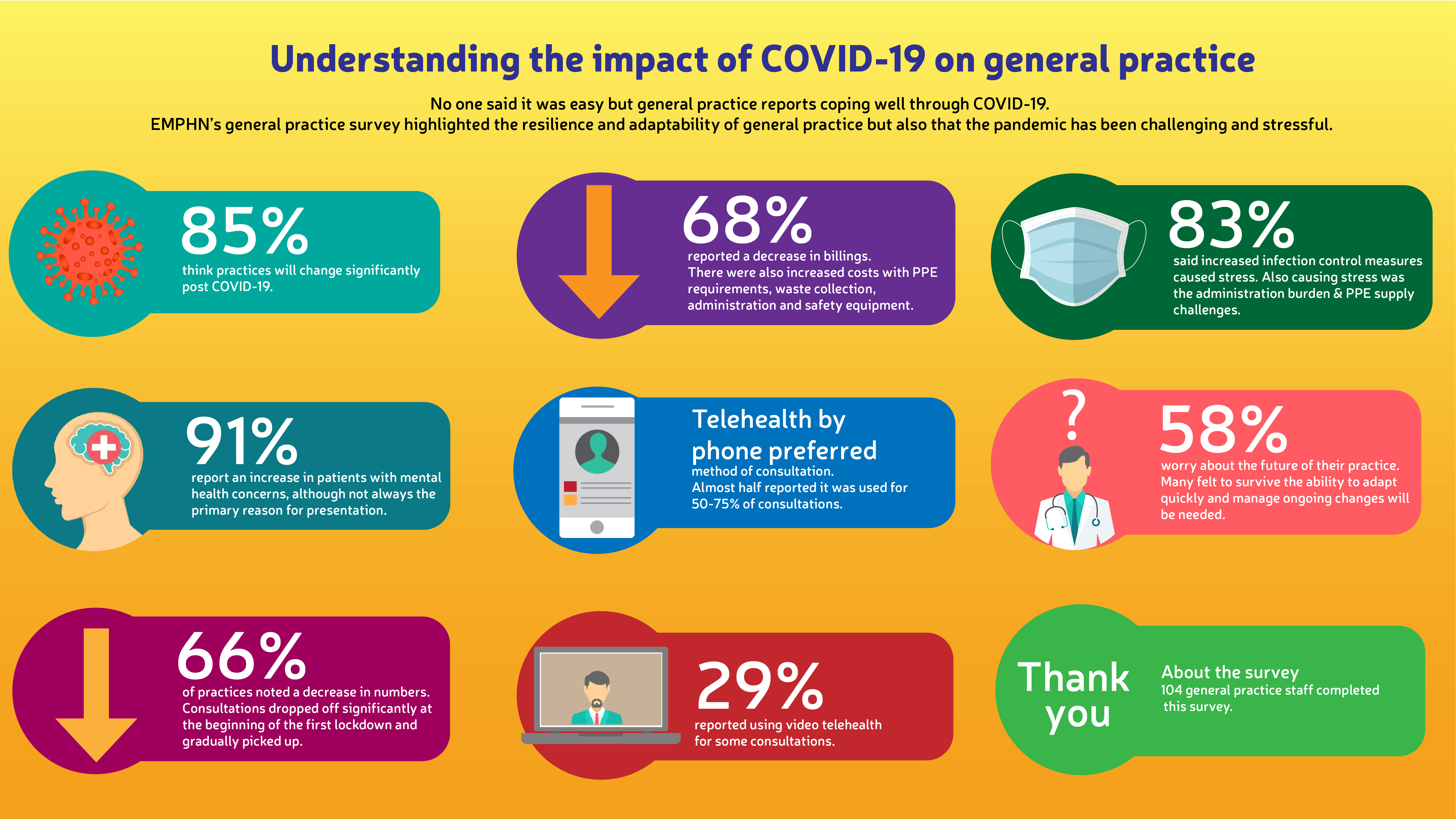The response to the COVID-19 pandemic has been global in its nature and at times, changing almost daily. Like many other sectors, primary care had to adapt and respond at a rapid rate to keep up, support staff and their patients safely and efficiently.
To understand the impact of COVID-19 on general practice, EMPHN conducted a survey with general practices within the catchment to gain an insights on the challenges and impacts that general practice has faced during his period and what this may mean in the longer term.

The results suggest that the challenges faced by general practice should not be underestimated and will likely have a longer-term effect. Many changes have been rapidly adopted, 85% of practices think that the nature of general practice will substantially change post COVID-19 with particular emphasis on the introduction of telehealth.
The impact of COVID can be measured across almost all aspects of general practice. 66% of practices noticed a decrease in patient numbers presenting to the practice. This is also reflected in decreased revenue with 68% of practices reporting a decrease in their billings.
Further to the reduced revenue, practices reported an increase in running costs mostly attributed to increased costs of PPE requirements, extra waste collection, increased administration and additional safety equipment to ensure COVID safe measures were met.
COVID-19 has enhanced the intersection of technology and healthcare via implementation of telehealth. Telehealth (phone) was the preferred method of consultation for practices with 42% saying that it was used for 50-75% of consultations while video consultations were not well utilised. 58% of respondents reported that they do not use telehealth (video) at all however that is likely to be much higher.
There is a general consensus that practices feel that telehealth has enabled them to provide continued care for their patients and some patients still do not have confidence to return for fact to face visits.
72% of respondents identified that staff are feeling somewhat stressed during the pandemic. Only 2% identified no change in the staff and 10% fell they are coping well.
Practices reported that the speed at which they were challenged with changing workflows, changes to documentation practices, and implementing telehealth procedures and platforms added to the stress and workload within the practice. It was also noted that patient education around screening, infection control practices and telehealth processes further increased their workload.
There was a strong response indicating that the administrative burden was high and therefore placed increased stress on the practice. 83% of respondents reported that increased infection control measures caused additional stress during COVID-19. Increased administration and supply challenges in obtaining PPE round up the top reasons practices reported they had additional stress.
58% of practice reported they are worried about the future of their practice; there was a strong feeling that many practices believe that in order to survive, they need to have the ability to adapt to and manage ongoing changes.
There was a very strong consensus that telehealth has been the biggest transformation to general practice during this period and there is a very strong message that both practices and patients would like to see this continue.
Many practices reported that they had learnt a lot during the last six months and that many additional safety measures around infection control have been put in place will now remain standard practice.
